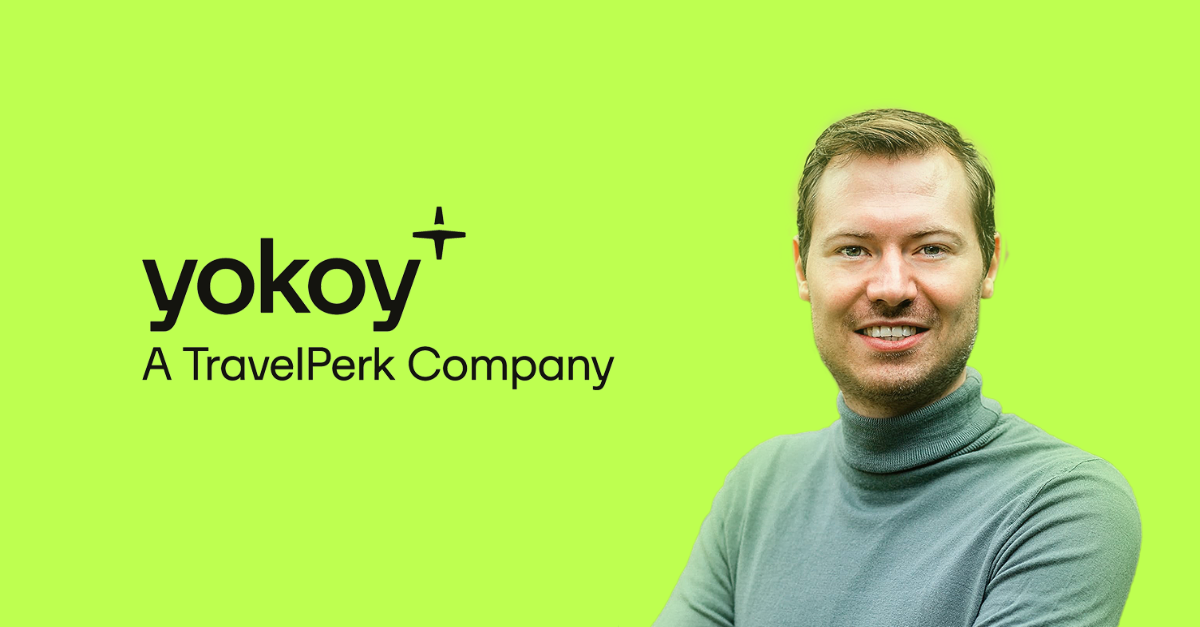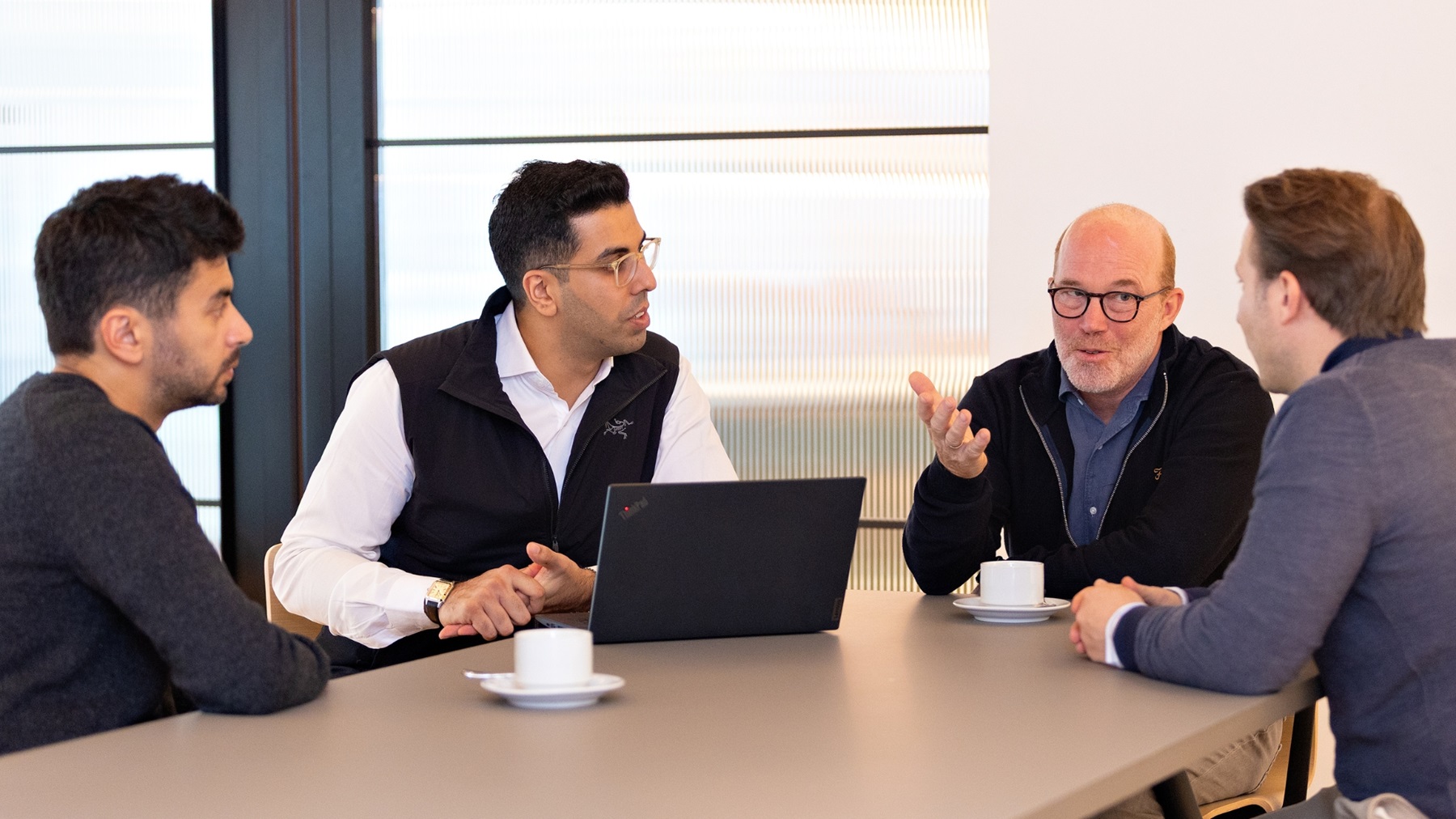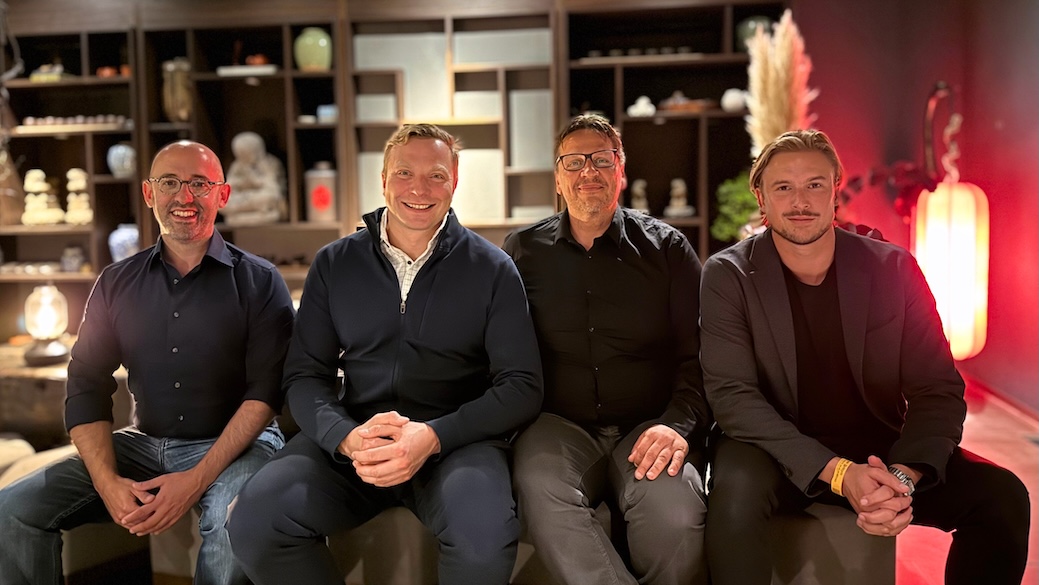Spend, Scale, Sell: Yokoy’s Path from Startup to TravelPerk Acquisition
Standing out in a crowded market is never easy. For Yokoy—originally known as Expense Robot—the decision to launch in the already-busy expense and spend management space was a bold one. But within five years, and after raising $108 million from investors like Sequoia and Speedinvest, the Zurich-based startup had grown from knocking on doors to landing a major acquisition by TravelPerk in early 2025.
In this edition of Scaling at Speed, we spoke with Yokoy’s co-founder and CEO, Philippe Sahli, about building a differentiated product, winning over early customers, and navigating the complexities of acquisition.
Building the foundation
Europe’s expense and spend management space was already buzzing in 2019. Startups like Denmark’s Pleo were targeting small businesses, while large enterprises remained stuck with legacy systems like SAP Concur. For the Yokoy team, the mid-market represented a glaring gap.
“There is a market which is not being served at the moment,” Sahli explained. “We really wanted to be laser-focused on that mid-market segment and build the best tool for them.”
Founded in 2019, Yokoy’s conviction was that by harnessing the growing possibilities of AI, they could revolutionize the market and make integration more seamless for thousands of companies. With technical cofounder Dr. Devis Lussi, alongside Lars Mangelsdorf, Melanie Gabriel, and Thomas Inhelder, the former E&Y team sat around a boardroom table and decided to give themselves a year to see if they could build something new in the space.
As with any new business, early customers were key. Through a combination of scrappiness and determination, Yokoy’s founders set out to find their first customers.
“We did everything possible,” Phillipe said. “We took every speaker slot at any event, even the most irrelevant events. We did the door-knocking thing, and we had our office in a big office building in Zurich, where we started. So that was kind of easy; that we went door knocking to all the companies there, you know, trying to sell them what was called Expense Robot back then.”
“I'm happy and grateful for those first 10 customers. They jumped on a boat and they didn't know whether it would work.”
Early product decisions paved the way for plenty of learnings about the way Yokoy would evolve. Initially, the team’s desire to bring in business and test the product meant that: "Our first customers — we just tried to get anyone who would use it. We basically took whatever system they had and built around it. We weren't picky at all. We were integrating with whatever tools they had,” according to Philippe.
Over the next 18 months, the team became more strategic with integrations, building out a suite of deeper connections that could then be more easily applied to a variety of different business use cases.
Evolving the Product and Strategy
One of Yokoy’s key innovations was the then-novel but now ubiquitous use of AI to analyse receipt pictures to create invoices. “We were the first kind of launching that app where you could just take a picture and it would actually not only read out a couple of things, but read out everything necessary to build a finance posting."
Beyond the challenges of building AI tools that could read receipt data, Yokoy also pushed to develop tools to make integrations more straightforward for finance and accounting teams at companies. In particular, the team built out a machine-learning technology model that managed VAT rates for different countries, working out tax deductibles on behalf of businesses.
Even with a strong AI backbone, integrations have often proved to be a challenge for all providers in the space, with different services often requiring vastly dissimilar APIs, software management, and even language.
"Integration is one of the biggest difficulties in the entire expense or spend management industry. And the one to travel is especially difficult because there are so many exceptions,” Philippe said.
"To make an integration perfect, it is almost impossible, because both tools are also developing at the same time."
Utilising AI, automation, and machine learning helped give Yokoy a competitive advantage, despite many other companies operating in the space. Despite these technical challenges, the team saw integrations not as a burden, but as a differentiator—something that could drive real stickiness with enterprise customers.
“The biggest competition is not another startup. It's companies doing this manually."
Evolution is par for the course for any successful business, and for Yokoy, that process meant evolving beyond expense management and into spend.
In short, expense management is focused solely on tracking, processing, and ultimately reimbursing employees for their costs. Spend comprises a broader approach to company spending that includes expense management, procurement, supply chain management, and general longer-term financial planning, designed to improve efficiencies.
"We started pivoting from expenses to spend by adding first cards... and then as a third one, we built our own invoice module,” Philippe said.
“I did not need 100% of the pie. 20% makes me a multi-billion dollar company.”
At one stage, Europe’s roster of expense management companies felt like the crowded field at the start of a marathon race. Beyond unicorn Pleo, other companies like Soldo, Payhawk, Spendesk, and Moss in Berlin all looked to bring new technologies and innovation to spend management.
Unsurprisingly, investors noticed this, and Yokoy’s pitch for funding required them to differentiate themselves in a crowded and fast-moving space.
Raising Yokoy’s seed round was far from easy, largely because the company entered an already crowded expense management market. Competitors like Soldo, Expensify, and others had a significant head start, making investors skeptical about market saturation. However, Sahli saw this as an opportunity rather than a blocker. While other players focused on small businesses, Yokoy deliberately targeted mid-sized to large enterprises by offering deeper integrations with ERP systems like SAP and Oracle. This strategic positioning helped differentiate the company despite being one of the later entrants to the space.
“For me, that was never an issue, because, you know, I did not need 100% of the pie. 20% makes me a multi-billion dollar company,” Philippe said.
The TravelPerk Acquisition: “It made much more sense to combine.”
One of the most critical integrations Yokoy developed was with TravelPerk—a relationship that started organically and slowly grew into something more.
“We knew them from very, very early on,” Sahli recalled. “It was a relationship we kept building over time.” Yokoy and TravelPerk began sharing leads, passing customer requests between teams, and coordinating on product compatibility. “They were giving us good leads... we gave them leads, which worked out,” Sahli said.
Over time, the limitations of a partnership model became clear. Two contracts, two sales processes, and two engineering teams meant slower cycles and more friction.
“Why do we need to send leads from one salesperson to the other?” Sahli said. “You have one selling your expense, one selling your travel—you have two contracts. It just makes everything so much harder.”
Eventually, it became clear that joining forces would unlock far more value than trying to deepen an integration alone. “If we want to be the front-runner, if we want to define how travel and spending is being done... we need to make sure we also have that kind of one platform,” Sahli said
“We could have had a really deep integration as two independent companies,” Sahli added. “But in the end, it made much more sense to just combine.”
Exiting is not the end of the road
For Sahli, the acquisition wasn’t the end of the road, but a continuation of the mission, just at a greater scale, with the combined resources and reach of a fast-growing travel tech unicorn behind them.
“It didn’t come abruptly. It built up over time,” he said. “It was trust.”
The experience also offered a valuable perspective on how founders should think about exits. Building long-term relationships, maintaining transparency with potential partners, and staying focused on the customer all played a role.
Today, Sahli continues to lead spend efforts within the combined business, focused on building an enduring platform with a global reach.
As Yokoy’s journey shows, success doesn’t always come from being first. It comes from solving real pain points, staying focused on product excellence, and knowing when to scale together rather than apart.













.svg)
